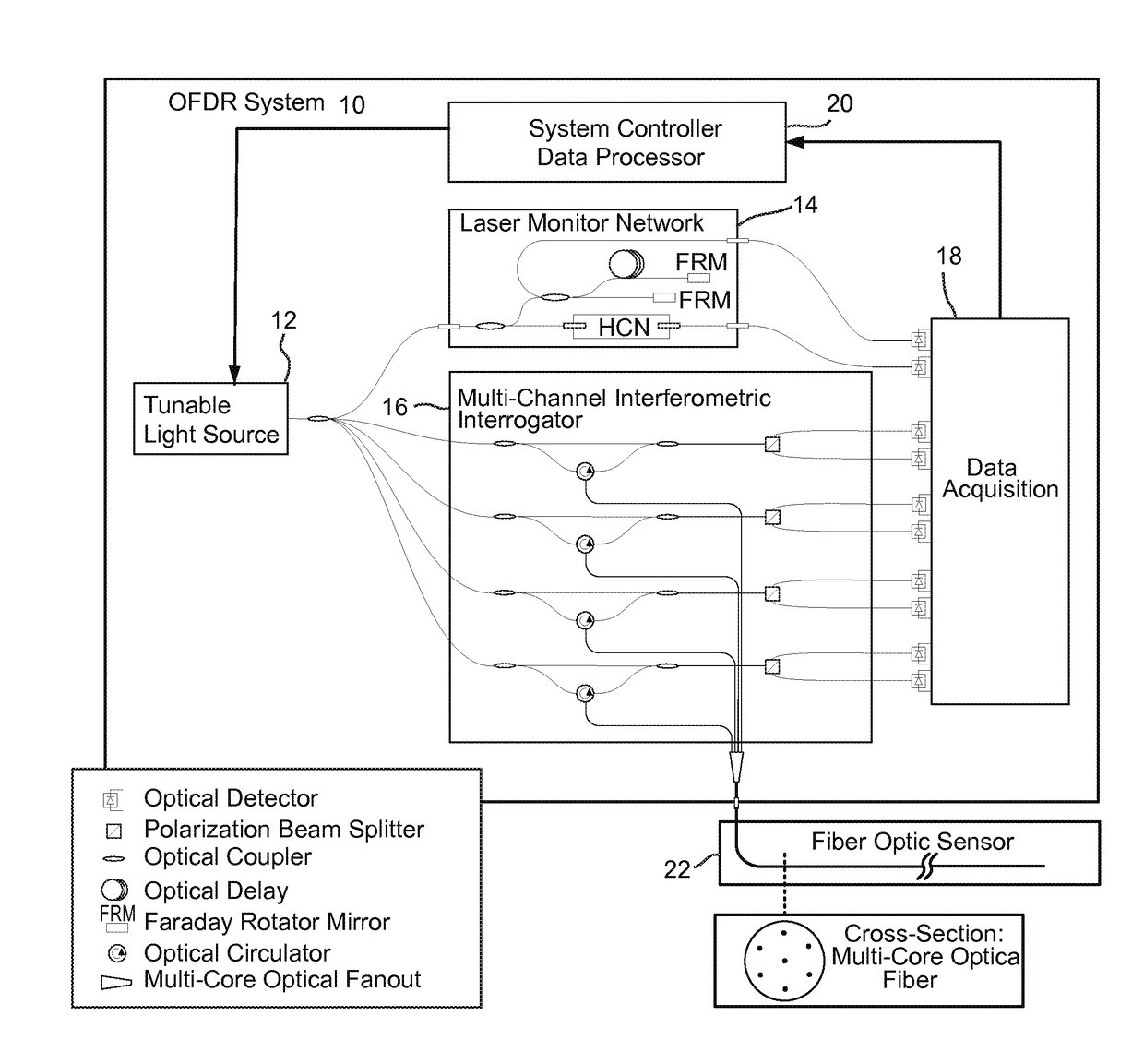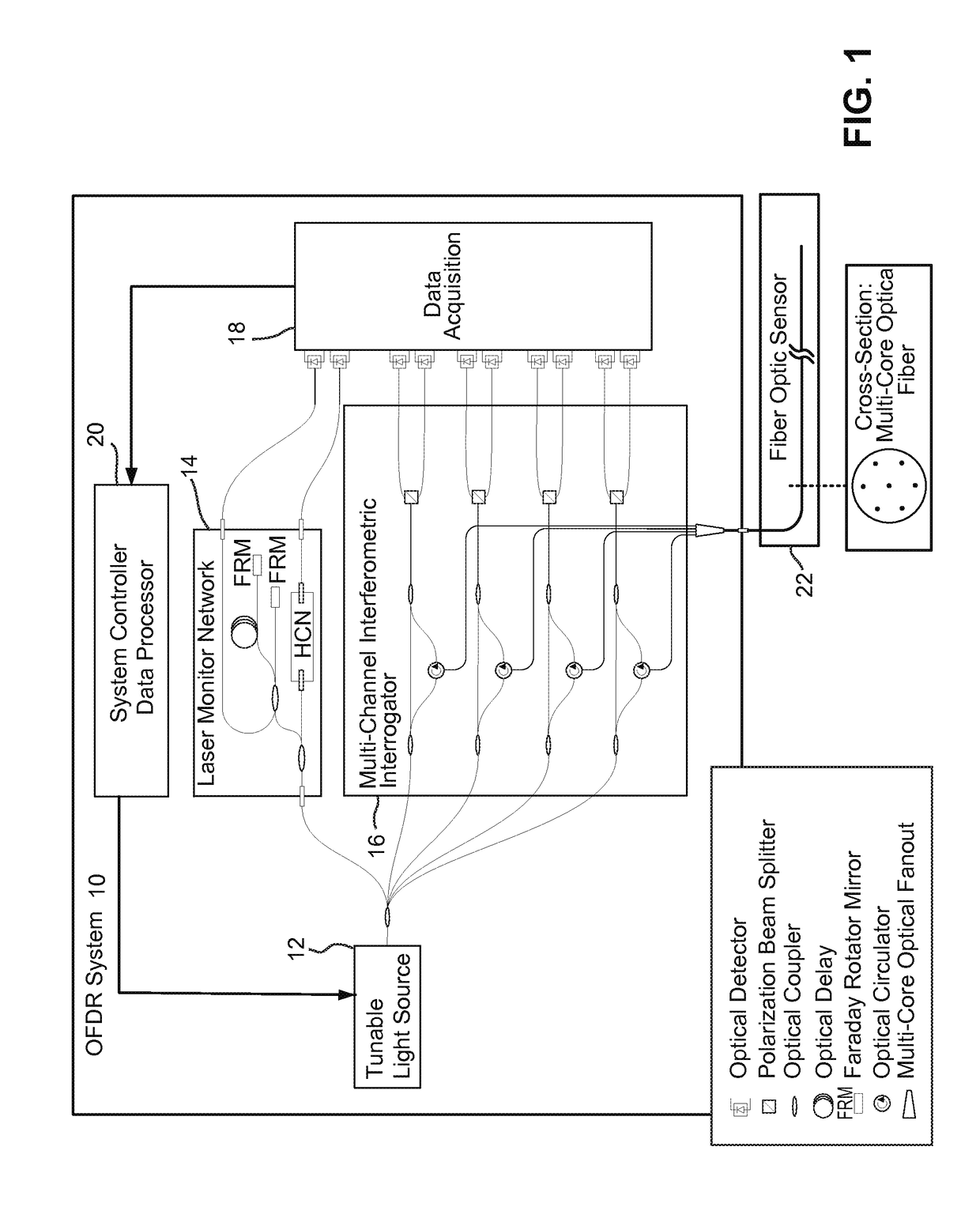Optical fiber and method and apparatus for accurate fiber optic sensing under multiple stimuli
a fiber optic and multiple stimuli technology, applied in the field of optical fibers, can solve the problems of cross-sensitivity, generating sensor measurement errors, and unable to distinguish between temperature and strain, and achieve the effect of reducing or minimizing twist measurement errors
- Summary
- Abstract
- Description
- Claims
- Application Information
AI Technical Summary
Benefits of technology
Problems solved by technology
Method used
Image
Examples
example implementation
of Strain and / or Temperature Sensor
[0084]The strains referred to in Equation 3 may stem from a variety of physical mechanisms. U.S. Pat. No. 8,773,650 describes strain on a core in a multicore fiber arising from three physical sources: strain applied along the axis of the fiber, strain due to fiber bending, and strain due to an applied twist. The core strain response to applied twist rate given by applied twist angle θ applied over length L is dependent on the core radius to the central axis r and the fiber's intrinsic twist period p, and to first order is given by the expression:
stwist≈Zπr2pp2+(2πr)2θL(5)
Transfer of fiber axial strain εz to the core is dependent on the core radius r, the intrinsic twist period p, and the fiber material's Poisson ratio η, and to first order is given by the expression:
stension≈p2-(2πr)2ηp2+(2πr)2ɛz(6)
The core strain in response to bending is dependent on the core radius r, intrinsic twist period p, the fiber material's Poisson ratio η, the curvature ...
example application
to Shape Sensors
[0091]The following shape sensing fiber description is provided as a specific example of adding an additional measurement core having different optical properties. In the canonical shape sensing calculation, the computation of axial strain / temperature εz, x and y curvature κx, κy, and twist θ / L is performed using a 4×4 matrix calculation, as shown below. A total of 16 linear scaling terms are used to calculate these outputs from the phase derivative or spectral shift OFDDR measurements Δvn in each of the four sensing cores.
(Δv0Δv1Δv2Δv3)=(M11M12M13M14M21M22M23M24M31M32M23M34M41M42M43M44)(ɛzKxKyθ / L)(9)
[0092]In an example shape sensing embodiment, a differently-doped core is included in the fiber (e.g., from one of three previously unused cores) and added as a fifth measurement term which is used to distinguish temperature change ΔT from axial strain εz. This example sensing fiber is illustrated in FIGS. 5 and 6A, 6B. Additional scaling terms are added to bring the mat...
PUM
 Login to View More
Login to View More Abstract
Description
Claims
Application Information
 Login to View More
Login to View More - R&D
- Intellectual Property
- Life Sciences
- Materials
- Tech Scout
- Unparalleled Data Quality
- Higher Quality Content
- 60% Fewer Hallucinations
Browse by: Latest US Patents, China's latest patents, Technical Efficacy Thesaurus, Application Domain, Technology Topic, Popular Technical Reports.
© 2025 PatSnap. All rights reserved.Legal|Privacy policy|Modern Slavery Act Transparency Statement|Sitemap|About US| Contact US: help@patsnap.com



